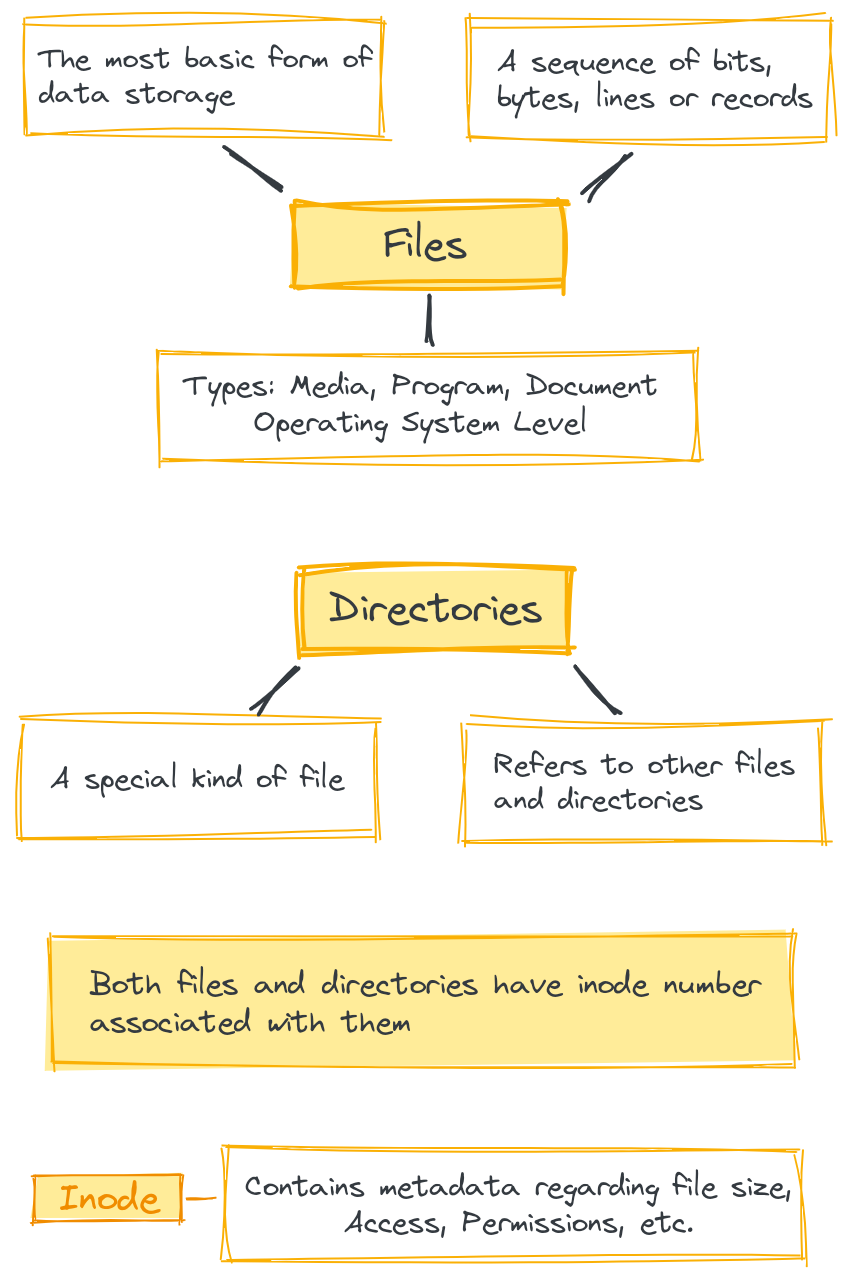Here is how I would rewrite this section on data storage abstractions in more student-friendly language:
Abstractions for Data Storage
The operating system doesn't just provide abstractions for memory management. It also provides abstractions for data storage on disk using the file system.
The main abstractions the OS gives us are:
- Files - a named collection of data
- Directories - a structure for organizing files into a hierarchy
Files
A file represents a logical storage unit from the user's perspective.
Directories
Directories create a tree folder structure for organizing files.
Why Abstractions?
These abstractions simplify storage from the user's view:
- We just see files and folders, not physical disk blocks
- Makes storage portable across devices
- Allows user-friendly interaction

The OS handles all the complex low-level data mapping behind the scenes. Files and directories are abstractions provided by the OS to create a logical view of data storage for the user.


